Team, team, team, TEAM! I had my birthday! It was my birthday, I am the best.
I get a little bit too excited when it is wonderful birthday time. I maaaay have reminded my family it was my birthday more than ten times.
So I made my birthday cake, but I didn’t use an online resource for this week’s baking project, because this week I learned from a real live human resource – my Mother.
How special, me and Samantha cooking a whole two cakes together. And we didn’t even fight!
The cake we made is called a “push cake” according to my Mom, which I guess basically means that you poke holes in a cake and fill them and there’s whipped cream and chocolate-y caramel-y goodness.
I did most of the actually baking, my Mom just directed me in the steps. Her first bit of advice came when I was making the cake. Cake from a box again, next time, I am going to bake some form of thing from scratch because I want to learn how to separate an egg, as this is mysterious goal #1.
She adds 1/2 a cup of milk and 1/4 cup of half and half cream to the recipe instead of the water the recipe asks for because it is more creamy and less healthy, so clearly it is much better.
I mixed the cake. I actually used a timer this time instead of just counting in my head, so it was probably mixed better than my cupcakes. Of which I still have some. So many cupcakes, why did I do this? I made a mistake. A pretty delicious mistake, but now I have cake, too. This baking project is helping me learn my own ability to estimate how much food I need.
I also got to have the batter off the beaters, which is bad for you, don’t do it!
…but I totally did, it was great.
The cakes went in the oven for about 20 minutes before we took them out, poked a ton of holes in them, and stuck em back in. This point taught me an interesting lesson. Remember with the brownies, where I was like, not sure how long to bake them and they weren’t baking and I was distressed?
One of the cakes, which was smaller, baked quite quickly. The other was hardly baked when we pulled them out to poke them with holes. The one was a little over 1/2 the size of the other, so it was interesting to see how much the size of the cake affects how quickly it will bake. The larger cake baked for 15 minutes longer than the smaller cake, that’s a huge difference, in my opinion.
The holes we poked were filled with dulce de leche which sounded so fancy, I was impressed. It was caramel flavoured. Which they don’t usually have, Sarah, so this is very exciting, it will taste so good.
The cakes were put back in the oven after the dulce de leche moment.
After they’ve been pulled out, we had to wait for them to cool, which takes so long, let me tell you. I think the worst part of baking is the waiting, I am not a fan. 0/10, would not recommend. Unless you want cupcakes and/or cake, then I guess it’s worth it.
After it was cooled, we covered the top of the cakes with cool whip, caramel sauce, and chocolate chips. And there we go! We did it!
If anyone wants an actual recipe, I can post it as well with my best attempts at describing all the steps and ingredients!
The cake was great, I am fond of birthday cake, and I sure sang to myself as I ate the whole thing. Cause I am great.
There is a picture of the cake, but it looks extremely ugly, so I’m not going to post it, I was not the best photographer at that moment.
For the math lesson I went with the inquiry approach again. I am surprised I am finding so much opportunity to bring in inquiry , I thought I would mostly include face-value, very basic word problems. But I think they are little more in-depth than that, things that I could legit see myself using, so that’s exciting.
My question would be regarding surface area and volume. Asking students the question “how does poking the holes in the cake affect both the volume and the surface area?” and then letting the students use whatever methods they’d want to measure surface ares and figure out how they could find the volume of the irregular shape. I found two outcomes directed toward surface area and volume, and both also involve units of measurement.
I think it would be cool to see what students could come up with in measuring the cake, what tools to use, what units to use, decimals, or fractions, things like that.
I’d imagine the easiest way to do both the volume and surface area would be measuring the tools used to make the holes in the cake rather than the cake itself. But we’d see if students would come up with that idea.
That’s the idea I have, I think it would help students learn to add and subtract shapes from each other, to break down irregular shapes into shapes they do understand, and to work with estimations and exacts with tangible volumes.
Demonstrate using concrete and pictorial models, and symbolic representations, understanding of area of 2-D shapes and surface area of 3-D objects including units in SI and Imperial systems of measurement.
Extend and apply understanding of surface area, volume, and capacity using concrete and pictorial models and symbolic representations (SI or imperial units of measurement)
Let me know what you think of the math, and if you’d like me to put out a recipe, I am totally down to write out an awful version of what I did to make a cake.

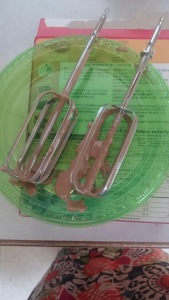
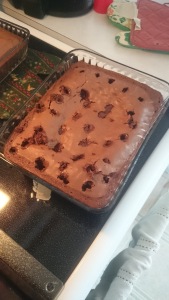
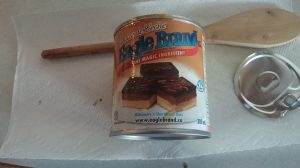
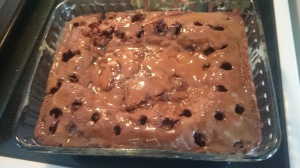
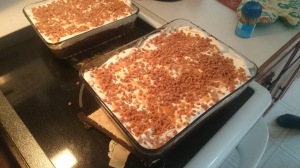
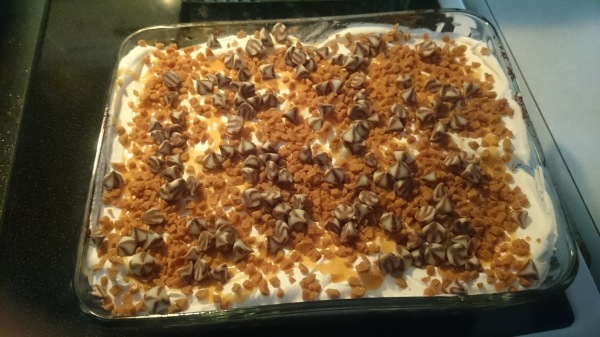
Great work. To me cake photo is not bad. Keep it up.
I want to live with you so that I can eat all of the amazingly delicious things you are baking!! I like that you changed it up by getting help from your mom! I love the cake you tried out, it looks so great. I also think it’s wonderful how you are finding so many direct connections to the curriculum. Also, it would fit in the following foundations and Foundations and Pre-Calculus 10 course:
FP10.3
Demonstrate understanding of SI and imperial units of measurement including:
linear measurement
surface area of spheres, and right cones, cylinders, prisms, and pyramids
volume of spheres, and right cones, cylinders, prisms, and pyramids
relationships between and within measurement systems.
If the school had a Home Economics lab, it would be fun to create the cake after the students did the activity.
My recommendation this week is Mayan Chocolate Sparklers. We make them every Christmas and they are super duper delicious! Here is the link if you are interested: http://www.underthehighchair.com/2008/04/mayan-chocolate-sparklers-new-personal.html
I will have to bring more baking then, so that you can try some of it, if you really think it looks good!
Ah, and thanks for the other outcome it can tie into – that’s awesome! And it totally works because the two shapes they’d be using would be cylinders and rectangular prisms. And, of course, I would always want there to be baking involved, just makes the math that much more fun, right? And you could work with the Home Ec teacher and do some cross-curricular work and collaboration.
Oh man, I had never even heard of those before, they look so good! I think I need to do a cookie wrap-up at the end of my project and make white chocolate macadamia nut cookies and Mayan chocolate sparklers and any of the other delicious cookies that I wanted to make, there’s just so many good recipes!
I can’t wait to try some of your baking. Always nice to see cross-curricular happen organically!
A cookie wrap-up sounds like an excellent idea! White chocolate macadamia nut cookies are one of my favorites, good choice!
This is great. Cake is great.
I really like how the more that one does something, such as you and learning to bake, the more questions one can ask about how this process/action applies to something like mathematics.
One question that you could ask the students would be to find out the difference in volume/capacity of the cake before and after baking. It’d be cool to find if there was a consistent relationship between all different kinds of caked goods, or if some ingredients factor more into the change in size than others. Might be a great lead-in into a science lesson, who knows, which is what makes it fun in the first place!
Thanks for sharing (your post I mean, I’m still waiting for cake)!
Pingback: The End of the Line…For Now | Sarah Kirschman's Education Discussions and Feelings